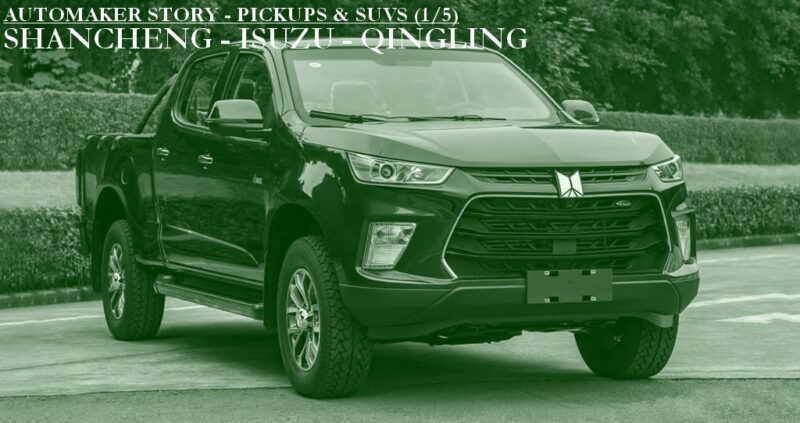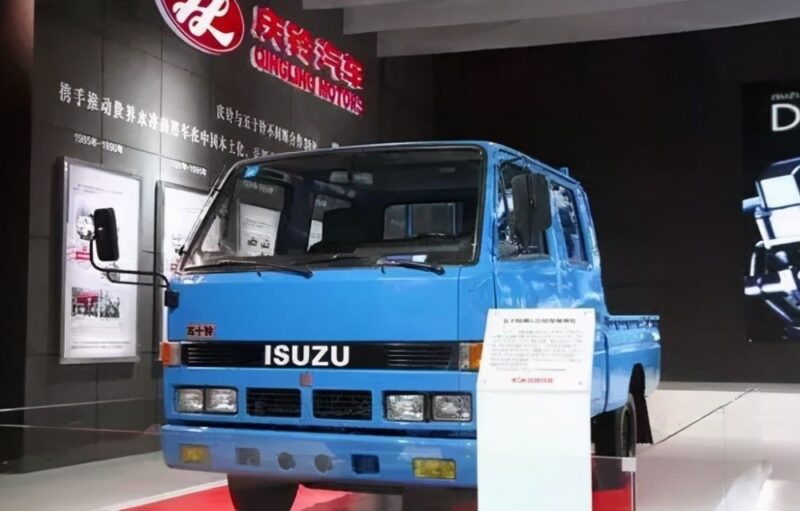The Big Read – Pickups & SUVs (1/5) – Qingling, the source of Chinese pickups
Pickup trucks, are they passenger cars? In the United States they certainly are, but elsewhere probably a little less so. And anywhere in the world the pickup truck is a handy tool for farmers or construction workers. So the question is, should we cover these trucks on a car website? Well, in Chinese automotive they’re rather inescapable if you want the full picture. So in the upcoming weeks we’ll be threading the fine line between passenger cars and commercial vehicles.
To make things a little easier, most of these pickup manufacturers often also made SUVs, in the original definition of that type of car. When the Americans came up with it, the Sports Utility Vehicle was a basically a pickup truck with closed, stationwagon-like rear end. That means body-on-frame construction with a sturdy ladder frame, solid axles, raised ride height and all-wheel drive. When more lifestyle oriented SUVs appeared, like Toyota RAV4 or VW Tiguan, it sparked a discussion (at least in the US) if these unit body, front wheel drive cars should be called SUV at all. The Americans are still divided, but the term SUV is widely used. The cars in the upcoming articles often follow the “strict” definition.
Short introduction to Chinese pickups
China has somewhat of a love-hate relationship with the pickup truck. The country has a vast rural hinterland where pickups are perfectly suited, but at the same time is heavily urbanized. While Americans may use their pickups as city runabout, the Chinese do not. More often than not, cities prohibit access for pickups, especially the diesel-powered ones. About two decades ago there was a plethora of pickup manufacturers though, so how did that come about?
If you have a government that’s creative in coming up with new rules and regulations, you probably grow a population that’s creative in circumventing them. So it starts with rules. At the end of the 1980s the Chinese government invented the national car catalog. This is a registration system for any new car to be produced. And it gives the government a selection opportunity, they can simply withhold production approval.
And that’s exactly what happened. There were a lot a small car makers in the country, producing all kinds of vehicles. When the national car catalog came online, many of those small factories did not get a passenger car production permit. Registration for commercial vehicles was a lot easier, so many of these factories switched to pickups (registered as light trucks) and SUVs (registered as small bus). There was even a period when some factories built a regular sedan, but without the trunk lid and registered that as a light truck. The buyer of the car got the trunk lid shipped separately.
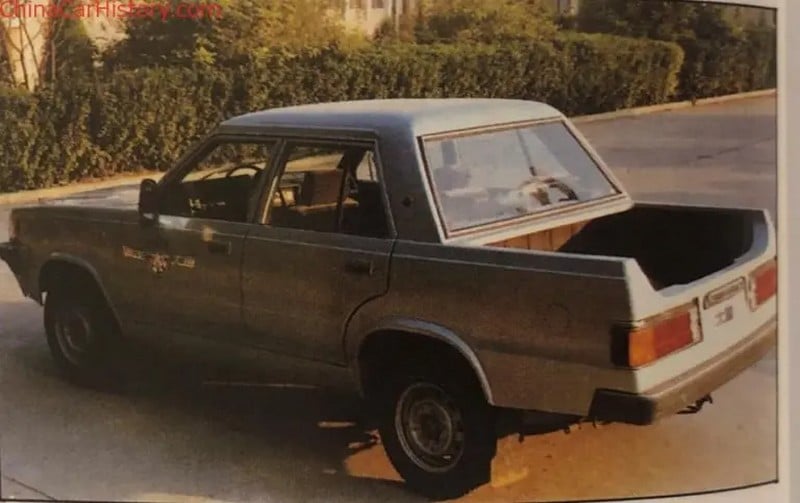
You can build it, but you still have to sell it. Pickups were around in China, mostly from Japanese brands, but these were quite expensive. When smaller factories were forced to make pickups, the Chinese came up with the ‘generic truck’, where the car was built with highly standardized components. This was already the case with the minicars, all based on Suzuki or Daihatsu technology. With pickups it went the same way. For some time you could buy a Isuzu-copied body from Foday (part 2 of this series), a ladder frame from Shuguang (part 3) and an engine from Xinchen, that made cheap copies of Mitsubishi engines. Put your own logos on it and you were in business.
These Chinese knock-offs were very cheap, often cheaper than regular cars. The Chinese love their minivans and minitrucks, but these were always considered commercial vehicles. A pickup or SUV is a lot more car-like, so quite some folks outside the big cities preferred the cheap pickup over a more expensive passenger car.
The vast number of pickup manufacturers that popped up around the turn of the century has steadily diminished and only a handful are left. There are a couple of reasons for that. First, several of the small factories were swept up by one of the large state-owned conglomerates. Several of them still make pickups, but now under the brand name of the new owner. Second, a little company from Baoding called Great Wall Motors managed to gobble up almost the entire market. Great Wall trucks and SUVs were just a little bit cheaper or just bit better built than the competition and that pushed out several of the smaller factories. In the next few weeks we’ll take a look at five of the companies that are still around. Some are still struggling for survival.


The market for pickups and SUVs is slowly changing. Some cities have started easing some of the restrictions and there have been calls to speed up and broaden that process. At the same time there is a ‘outdoor adventure’ lifestyle developing, which manufacturers are reacting to. Market leader Great Wall introduced the new Tank brand this year, for large body-on-frame SUVs and they added an off-road version of their best-selling pickup, with fat tyres, very high road clearance and a snorkel. It fits the current trend of Chinese brands moving up-market.
So, let’s start our journey through China’s off-road vehicle market. First up is a manufacturer called Qingling.
Chongqing Machinery Factory and the Shancheng truck
Those of you already familiar with Qingling may find it an odd choice to start with, because the company does not fit the description of the “small pickup factories” above. However, Qingling is important as the trailblazer for many the factories that do fit the description. We will soon find out why.
But let’s start at the beginning. Well, not really at the very beginning. Chinese companies sometimes try to exaggerate their history, so they appear to be very old. I wouldn’t accuse Qingling of doing this, so let’s begin where the company website lays the foundation: in 1946. The place is Chongqing, still under Nationalist (Kuomintang) rule. The government has just moved the capital from Chongqing to Nanjing, after the Japanese invader has left the country. That of course has some effect on the local economy of Chongqing, a city in south central China on the banks of the Yangtze river. Several small workshops in the Xiexing district of the city merge to form Chongqing Xiexing Machinery Factory. Some of the merging companies go back several decades more, so Qingling could have started its history a little earlier if they wanted to.

The Xiexing Factory makes stuff like steam engines and power tools, mostly supplying the inland shipping industry. In the following two decades the factory merges with others several times and changes names regularly. Their main business stays with the shipping industry, including ship repair and maintenance. By 1966 the company has decided on the name Chongqing Power Machinery Factory and car production is in sight for the first time.
The Chongqing Revolutionary Committee that controls the power machinery factory takes inspiration from developments in Jiangxi province. There the Jiangxi Machinery Factory trial produces a truck by itself in 1967, after lengthy political dabbling with the various stakeholders in the planned economy. In Chongqing the thinking is “we can do what they do”. So the Committee orders a local truck and gathers a number companies to develop it, with Chongqing Power Machinery in the lead.
The team starts replicating the FAW Jiefang CA10 truck. During the process they discover that they do not have the right stamping equipment to make the cab. So for the prototype they saw an old Jiefang city bus in half, move the engine forward in the frame (between driver and passenger seat) and create a double-row flat head truck. Five prototype trucks take part in a holiday parade in March 1970.
The truck gets the name Shancheng SC140. Shancheng means “mountain city”, the nickname of Chongqing. Serial production starts on small scale the next year and the factory gradually expands to a capacity of 2.000 trucks per year. That capacity proves to be a little optimistic though. In the sixteen years of production, just over 13.000 Shancheng trucks are made. With the switch to car production, the machinery factory renames itself to Chongqing Automobile Factory in 1975.

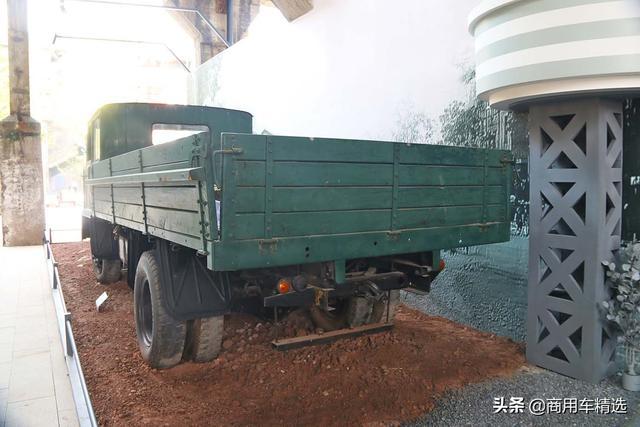

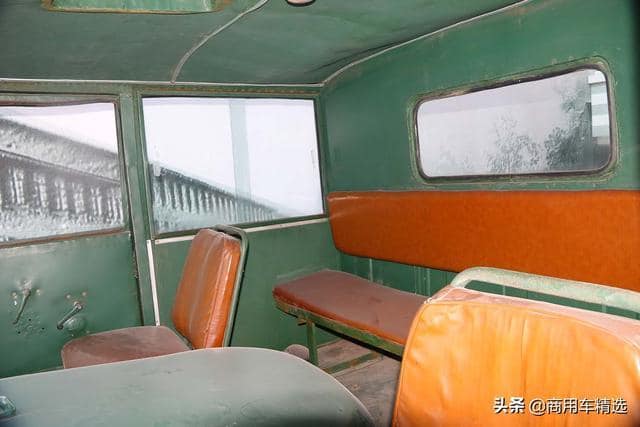
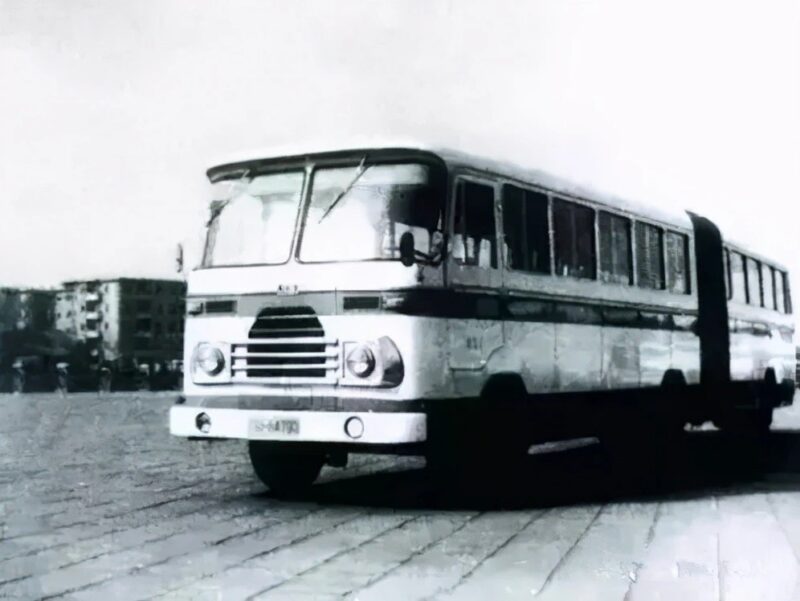
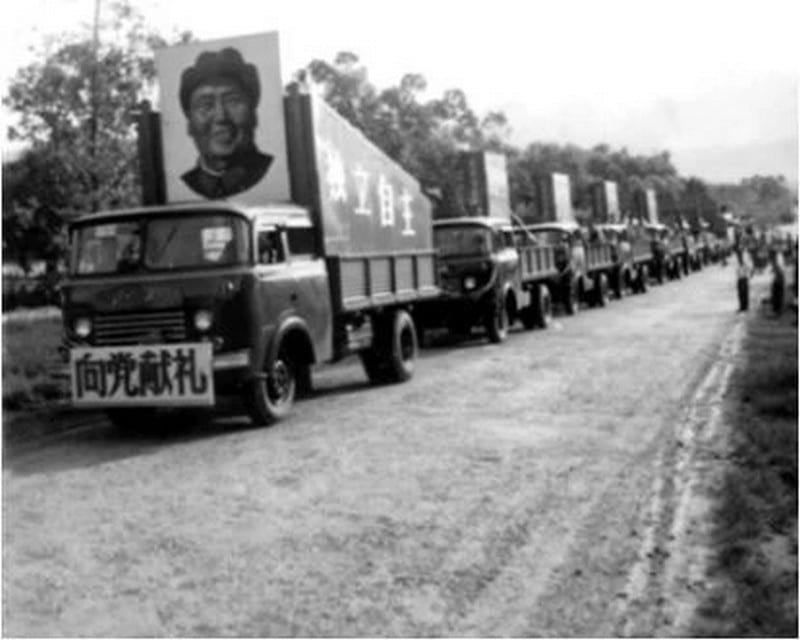

In case you ever wondered why Changan, the large car manufacturer from Chongqing, uses the SC company code for its cars, now you have a clue. It comes from Shancheng. Changan inherits the registration code after the truck went out of production. That nicely coincided with Changan’s entry into the business, making Suzuki-based minivans. Chongqing Automobile could do without the code because by that time it already got a different one.
Qingling by Isuzu
The late seventies are the time of sweeping economical reforms and Shancheng can’t keep up with changes. Demand for the truck dwindles and Chongqing Automobile is desperately looking for a new product. Dongfeng and FAW responded to the economic renewal by setting up industry associations in an attempt to gain control over many suppliers and related companies. In 1980 Chongqing joins Dongfeng Industry for while, but finds no solace. In 1982 they join FAW Industry with the same result.
Three times is a charm, they say, and for Chongqing Automobile this is indeed the case. The then manager of the factory (Wu Yun) proposes setting up a joint venture with a foreign car maker and finds an accomplish in the local party secretary (Xiao Yang). Both men go on expedition to Japan and manage to convince the directors of Isuzu, one of Japan’s older truck manufacturers. Contracts are signed and on New Year’s day of 1985 the joint venture between Chongqing Automobile and Isuzu is formally established. Name of the new company is Qingling Motors. Chongqing Auto owns 75%, Isuzu the other 25%.
Isuzu itself goes back a long way. The origins of the company lay in 1916, when the Tokyo Ishikawajima Shipyard and the Tokyo Gas Company work together on car production. The first cars are license-built British Wolseleys. In 1933 the company merges with DAT Automobile (the predecessor of Nissan) to Tokyo Automobile and it begins to make self-developed trucks with the Isuzu brand. Tokyo Auto also sets up a few factories in the Japanese-occupied part of China. These factories are of course nationalized when the Japanese leave after World War II.
After the war the joint venture in the homeland is also unraveled and from 1949 Isuzu Motors becomes an independent company. The company makes commercial vehicles mostly, but also starts a passenger car program with technical assistance from the British Rootes Group. Later Isuzu forges a long-running partnership with General Motors, lasting from 1971 to 2006. The last Isuzu passenger car is made until 2002, thereafter the company makes only trucks, pickups and SUVs.
The significance of Isuzu
Qingling starts production of the Isuzu N-series, also known as Isuzu Elf, in 1985 and the Faster pickup follows in 1987. Three years later the TF-series pickup comes into production as well and here we have the reason why this series of articles begins with Qingling. The pickups are very successful in the market, quickly becoming the number one brand for ten years straight. As a result, this Isuzu TF is extensively copied in China and parts of it make it to almost every small Chinese pickup manufacturer in the 1990s and 2000s. The same goes for the technically related SUV, called Rodeo (or Mu in other international markets).
The same fate befalls the Isuzu D-Max after introduction in 2003. Many, many copies appear. One of the factories using Isuzu-copied bodies is Great Wall Motors. Great Wall replaces Qingling-Isuzu as the largest pickup manufacturer of China in 1998, a position it holds until today.


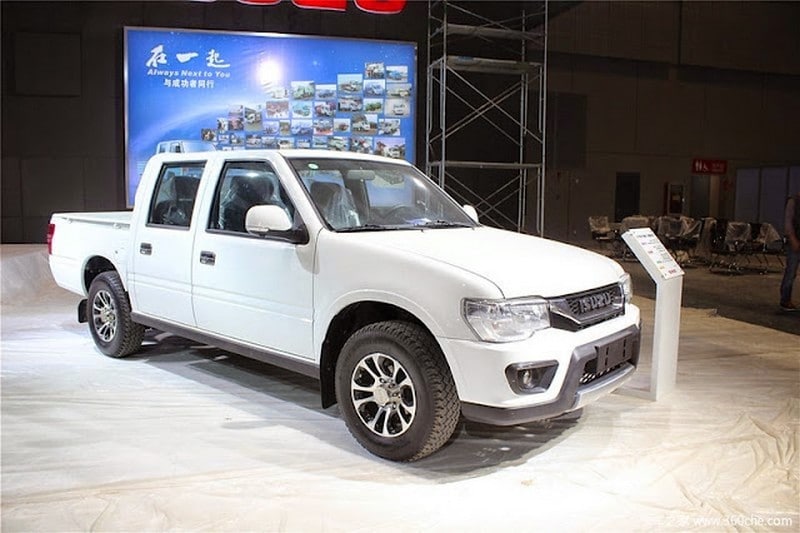
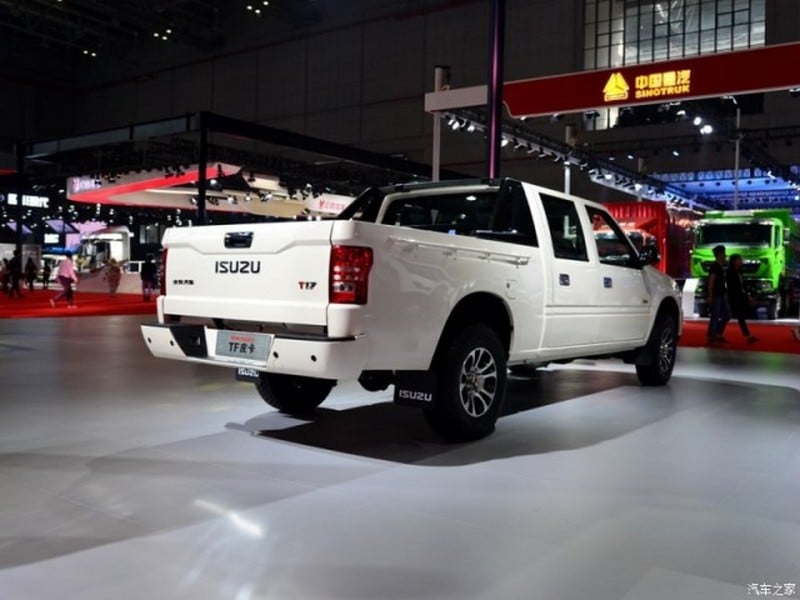
It is no different with the bigger trucks. Especially the Isuzu Elf is everywhere in China. Many manufacturers use the cabs, either sourced from Isuzu directly, or licensed copies produced by BAIC or Nanjing Automobile. Isuzu itself has expanded its business, because Qingling is not the only joint venture of the Japanese brand. It also has a better known association with Jiangling Motors (JMC), the successor of Jiangxi Machinery, the company that inspired the Shancheng truck in the first place.
The final reason why Isuzu is an important player on the Chinese market: it’s a large manufacturer of diesel engines. The smaller 4-cylinder units appear in many pickups and SUVs. These are usually made by the JMC-Isuzu joint venture, but Qingling also has an engine plant. It’s established in 2007 and makes engines for the larger trucks.


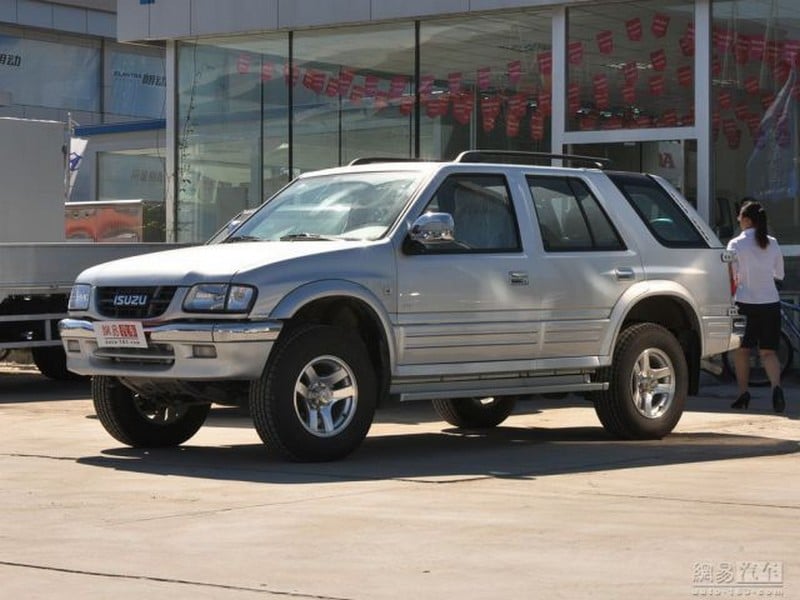
The Qingling brand
Let’s return shortly to the corporate development. There are two developments that need to be mentioned. First, Qingling’s Chinese parent, Chongqing Automobile, merged with two smaller machinery factories in 1991 and renamed itself Qingling Automobile Group three years later. Qingling Group remains wholly owned by the Chongqing local government. Second, Qingling (the joint venture) becomes a public company in 1994. It is released on the Hong Kong stock exchange. Both Qingling Group and Isuzu sell some of their stock, which makes the current ownership ratio: Qingling Group 50,1%, Isuzu Motors 20%, publically traded 29,9%.
If we take a look at sales, Qingling sold 100.000 cars per year in its heyday, but in more recent times the number circles around 50.000 per year. It might seem low, but Qingling Isuzu caters to the high-end of the market. They are known for excellent quality and service and of course that comes at a price. And Qingling is making mostly light, medium and heavy trucks. The latest pickups and SUVs are coming from JMC-Isuzu.
Still, Qingling acknowledges the need for larger capacity and has made some moves to enter the more mainstream part of the market. In December 2017, Qingling introduces the 2nd generation D-Max pickup under its own brand, as Qingling Taga, for much lower prices than the JMC-Isuzu original. The latest D-Max follows in 2021, as Taga-H. Taga is the wonderful acronym of ‘to achieve great aim’, but as far as I can find out, the Qingling branded pickups are not yet a great success.


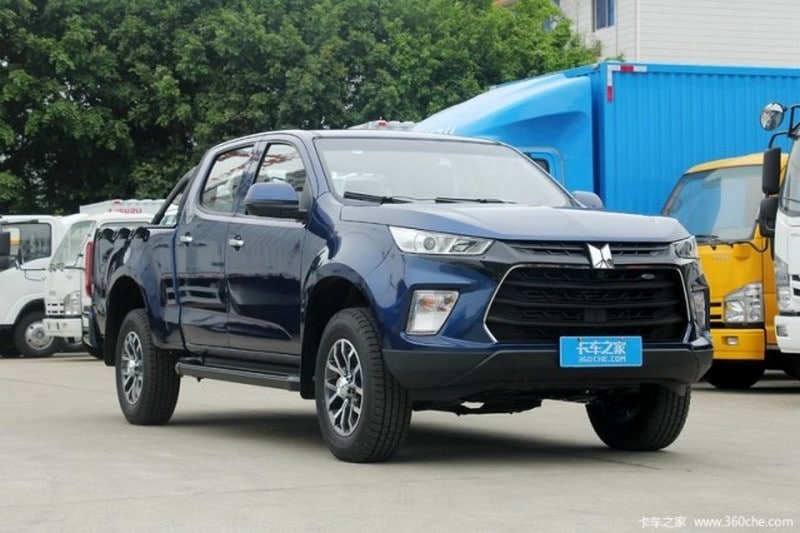
Next, Qingling sets up a joint venture with Shineray, the motorcycle company that also makes minivans and –trucks together with Brilliance. The aim of Qingling Shineray is to offer a range of Isuzu trucks at reduced prices. After the initial announcement of the joint venture in December 2020, there has been very little to report about. So far, it seems to be a sales channel only.
In 2021, parent company Qingling Group established a joint venture with Bosch, the huge German components supplier, for the development of hydrogen fuel cells for trucks. With Isuzu so deeply involved with the diesel engine, it’s no surprise Qingling decides to go the New Energy route on its own. The first results of Qingling-Bosch’s work appeared in the MIIT new car announcements earlier this year. Qingling Motor registered two hydrogen powered trucks under its own logo.

Sum up and what’s next
Qingling is a small, but highly respected manufacturer of Isuzu trucks. You’ll probably won’t see the brand pop-up often on CarNewsChina, but it played an instrumental role in the emergence of domestic pickup truck manufacturers. Next week, we’ll take a look at the company that copied the early Qingling-Isuzu pickups, Foday, and how it ended up in the hands of Xpeng.



